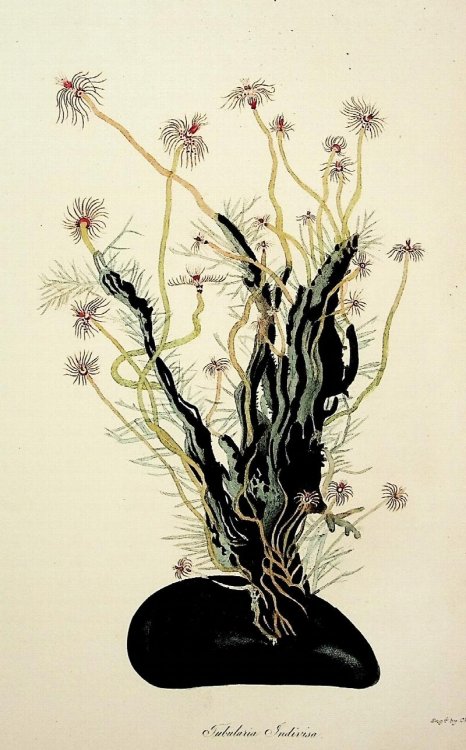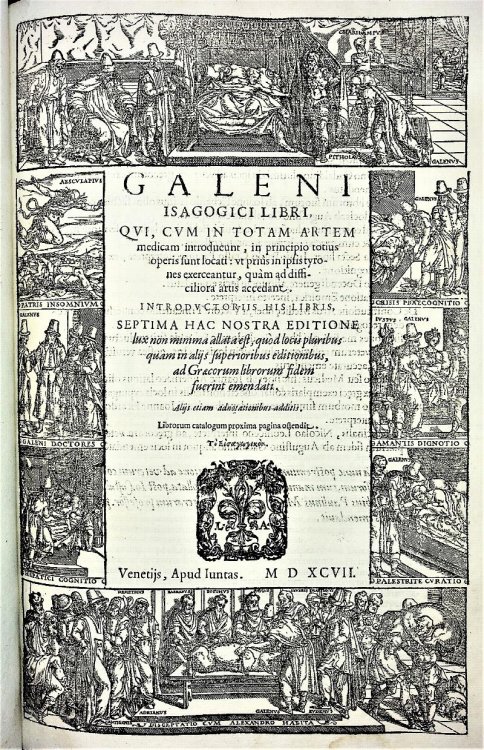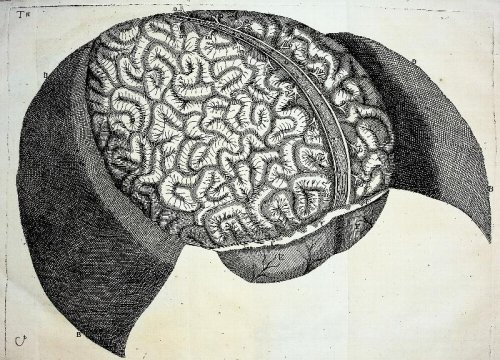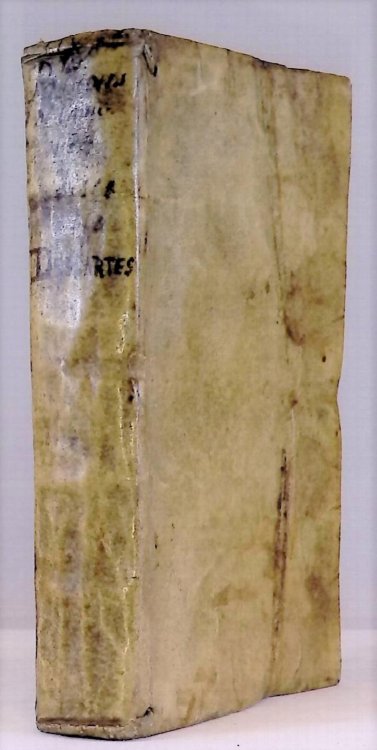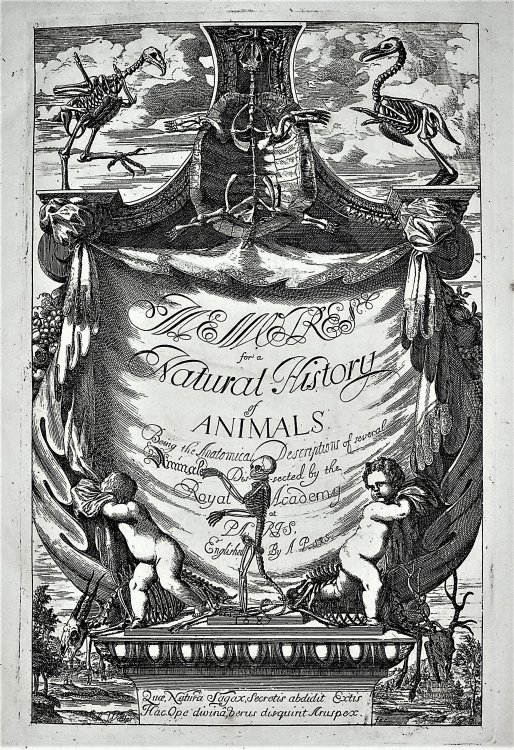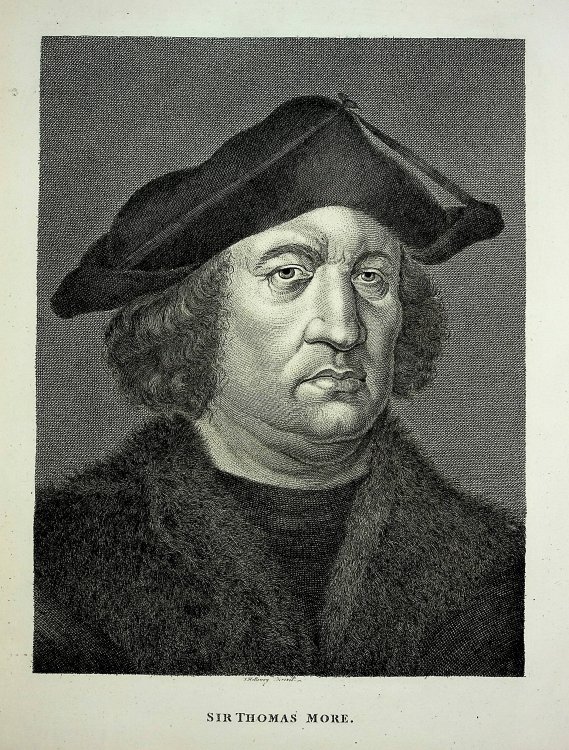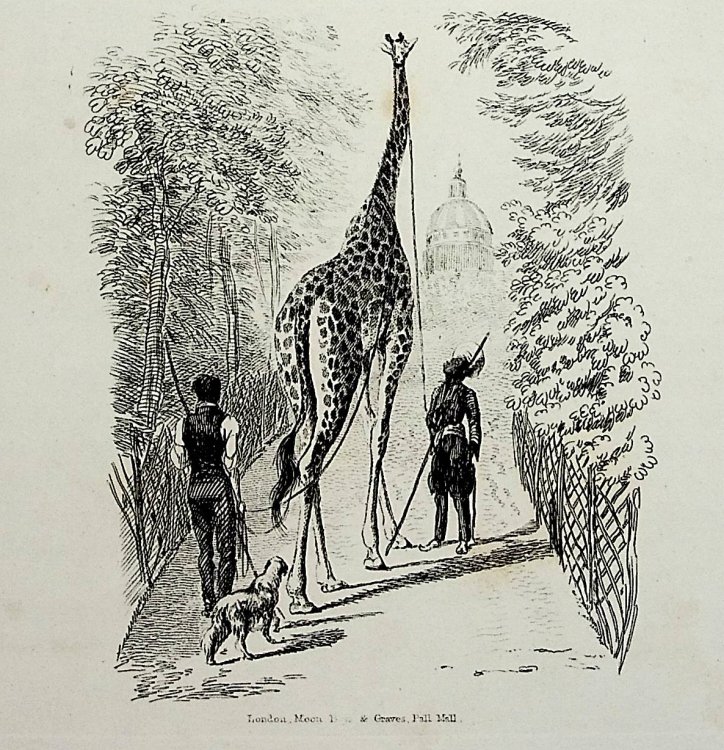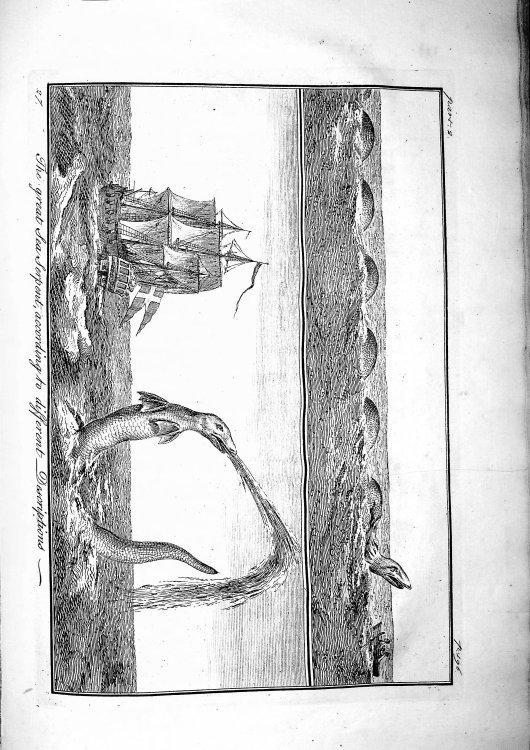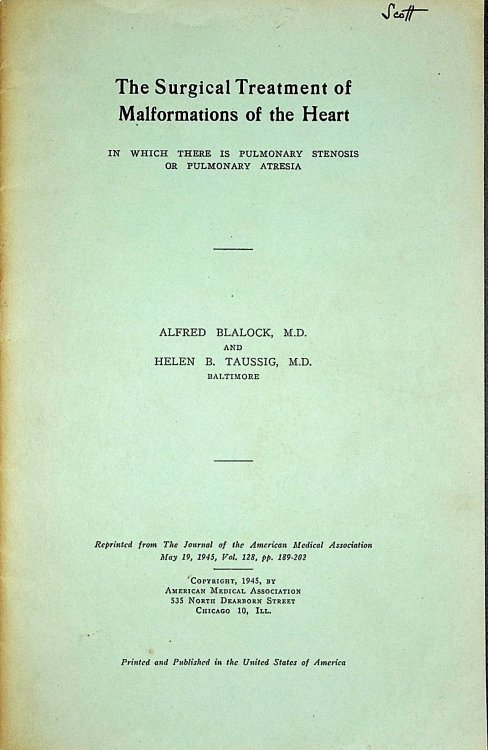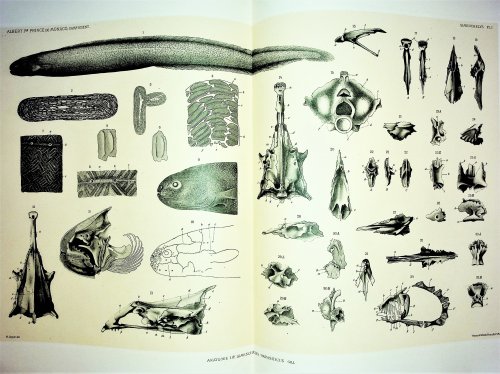
Contribution a l'Anatomie du Simenchelys parasiticus Gill
$90.00 USD • Used
SUMPTUOUS MONOGRAPH FROM THE OCEANOGRAPHIC INSTITUTE OF MONACO ON ANATOMY OF A DEEP SEA PARASITIC EEL--FINE DOUBLE-PAGE LITHOGRAPHIC PLATES. 14 inches tall folio volume, paper covers with title pr...
SUMPTUOUS MONOGRAPH FROM THE OCEANOGRAPHIC INSTITUTE OF MONACO ON ANATOMY OF A DEEP SEA PARASITIC EEL--FINE DOUBLE-PAGE LITHOGRAPHIC PLATES. 14 inches tall folio volume, paper covers with title printed on tissue jacket with coat of arms of the Sovereign Prince of Monaco, handstamp of Ernest A. Lachner top of cover and half title, 76 pp, text printed on heavy rag paper, 5 double-page lithographed plates with tisue guards, Text in French. Cover edges age-toned, text clean and unmarked, plates bright and clean, very good. This monograph forms part of a series of scientific reports on marine life collected by Albert the 1st, Sovereign Prince of Monaco, collected from his yacht. The report was printed under the direction of Prince Albert, with the approval of Jules Richard, doctor of science, chief of zoologic studies. Simenchelys parasitica is also known as the snubnosed eel, is a species of deep-sea eel and the only member of its genus. It is found in the Atlantic and Pacific Oceans, typically at a depth of 1,6005,900 ft near the bottom. Although typically a scavenger, it is better known for using its powerful jaws and teeth to burrow into larger fishes as a parasite. Spencer Fullerton Baird reported that the eels are not unfrequently found nestling along the backbone of the halibut and cod, where they seem to have the power of abiding for some time without actually causing death. Baird also made note of the eels' supposed habit of burrowing into the abdominal cavities of netted, gravid shad and eating their eggs within the span of a few minutes. In 2002, Koyama et al. reported that they had cultured cells from the pectoral fin of a snubnosed eel and maintained them in vitro for over a year. This represents one of the first cases of successful long-term tissue culture derived from a deep-sea multicellular organism, and has implications for a range of biotechnological fields. ALBERT I, PRINCE OF MONACO (1848 - 1922) devoted much of his life to the study of the sea and oceans. At only 22 years old, he embarked on a career in the then relatively new science of oceanography. Understanding the importance of the relationship between living creatures and their environment, he devised a number of techniques and instruments for measurement and exploration. He founded the Oceanographic Institute Foundation Albert I, Prince of Monaco, a private foundation established in 1906. It has two buildings: The Oceanographic Institute of Paris, now renamed Ocean House, and what became the world-renowned Oceanographic Museum of Monaco. This includes an aquarium, a museum, and a library, with research facilities in Paris. He owned four research yachts, Hirondelle, Princesse Alice, Princesse Alice II and Hirondelle II. Accompanied by some of the world's leading marine scientists, he travelled the length and breadth of the Mediterranean, making numerous oceanographic studies, maps and charts. In 1918, the US National Academy of Sciences awarded Prince Albert its Alexander Agassiz Medal for his achievements. The Explorers Club elected Albert I to its highest category of membership Honorary Member in 1921. MAURICE JAQUET was conservator of the Oceanographic Museum of Monaco. PROVENANCE: ERNEST A. LACHNER (1916-1996) was Curator, Dept. Vertebrate Zoology, National Museum of Natural History, Smithsonian Institution. He was known internationally in the field of ichthyology for his studies on Indo-Pacific gobies and cardinal fishes. At least five new species of fishes have been named after Dr. Lachner, who published 85 scientific reports on the biology of fishes, museum collections and resources.
Product Info
Publisher: Imprimerie de Monaco
Year: 1920
Type: Used
Binding: Softcover
First Edition
Seller Info
BiomedRareBooksLLCABAAILABIOBA
Address: P.O. Box 193 North Garden, Virginia
Website: https://www.biomedrarebooks.com
Country: United States
